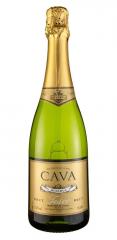Aussie Beauts
POSTED ON 21/09/2013The Decanter World Wine Awards is the UK's biggest wine competition, and with 14,000-plus wines entered this year, the Aussies have aced it with six international trophies compared to Spain, Chile and South Africa's four and France's three.
The Big Six trophy winners were 2010 Penfolds Bin 389 Cabernet-Shiraz, 2011 Josef Chromy Chardonnay Tasmania, 2011 Credaro Family Estate Beach Head Shiraz Margaret River, 2007 McGuigan Bin 9000 Semillon Hunter Valley, 2008 Eden Springs High Eden Riesling Eden Valley and Campbells Topaque Rutherglen.
New Cape Escape
POSTED ON 14/09/2013If the word pioneering is a cliché in wine, the reality is that new wine regions in the New World often emerge as a result of a few brave souls going out on a limb. So it is with Swartland, the Cape wine region justifiably garnering attention and praise for wines based largely on Rhône styles .
Irouleguy - The Route Less Travelled
POSTED ON 07/09/2013If South-West France is as far as you can delve into La France Profonde without going astray, then Irouléguy is the wine region at the end of the rainbow. Little heard of, and even more rarely seen, this tiny little beauty spot, with only 240 hectares to its name, is tucked so far into the French Pyrenees that it almost spills into the Atlantic Ocean. Yet what it lacks in size and celebrity, it more than makes up for in the character of its people and its food and wine.
For Goodness Sake
POSTED ON 24/08/2013I was discussing the joy of Japanese sake with a couple of wine merchants when they both turned to me and said disparagingly ‘but it’s made of rice, not grapes’, as if that somehow made it a lesser drink than wine.
A Muscadet Keeps the Doctor Away
POSTED ON 17/08/2013Remember that thirstquenching, bone dry white wine from the Loire we used to knock back by the bucketful before Bridget Jones discovered chardonnay? What ever did happen to muscadet? Once all the rage, it went the way of Hungarian merlot, Romanian pinot noir and prawn cocktail. Why? What happened quite simply was that it was washed away by the New World tsunami of chardonnay and sauvignon blanc because it couldn’t compete on flavour and wasn’t oaky or powerful enough.
The Game Changer
POSTED ON 10/08/2013According to a recent tweet, ‘wine is the ultimate blind purchase; you can't even look at it properly until you've cracked open the bottle’. Six years ago I would have agreed, but not any longer. It was in 2007 that I first slotted my wine smart card into a bright, shiny and new enomatic machine at The Sampler in Islington’s Upper Street. Into my glass gurgled 25 centilitres of nectar, and then another, and another.
Virgin Territory
POSTED ON 03/08/2013If you’re the kind of customer who flies Virgin Atlantic, borrows Virgin Money and signs up to Virgin Active because you’re a fan of Richard Branson and the Virgin brand, then Virgin Wines might not be for you. Not because there’s anything wrong with the brand, far from it. It was started by Branson in 2000, but subsumed in 2005 under the Direct Wines umbrella that also includes Laithwaites and Avery’s.
The Riesling Why
POSTED ON 20/07/2013Every grape has its day. The list , which includes a grenache day, a cabernet sauvignon day and a chardonnay day, is becoming as common as saints days. Somewhat greedily, the Germans are now claiming the whole of July for their riesling grape. The 31 Days of German Riesling sees restaurants and independent retailers running promotions with tastings and events. To find out who’s signed up to take part, check out www.31daysofgermanriesling.co.uk.
I Con Wine
POSTED ON 13/07/2013It’s axiomatic that if you call your own wine an icon as so many South American producers do about their top-of-the-range brands, then it’s not an icon. How do you distinguish a genuine solid gold wine icon from fool’s gold? Bordeaux’ Château Lafite and d’Yquem, Burgundy’s Domaine de la Romanée Conti, Champagne’s Krug are blue chip icons. An icon is a wine that’s earned its stripes with a proven track record of quality and longevity, a recognition factor and more often than not an investment value.
Picnic Pinks and Festive Fizz
POSTED ON 30/06/2013Sparkling
Tesco Cava Reserva NV, Spain
There's a lot of ho-hum cava about but this reserva of the species from Jaume Serra is worth the extra £2 you pay over the basic cava brut; a classic Catalonian blend, both savoury and dry.
£6.99, Tesco
 Tesco Cava Reserva
Tesco Cava Reserva
2011 Workhorse Sparkling Chenin Blanc, Ken Forrester, South Africa

